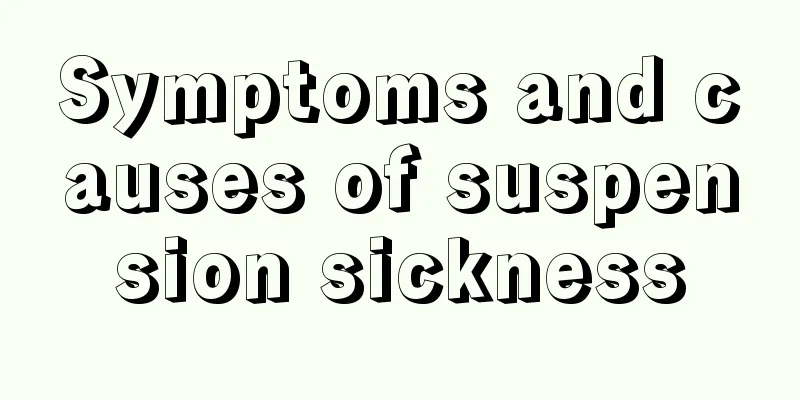What's going on with a missing piece of hair?

|
In real life, many people are prone to missing patches of hair, and there are many reasons for this. Generally, this is a problem caused by alopecia areata, and there are many reasons for this. It is usually caused by a lack of vitamins or trace elements in the body. People with alopecia areata need to be treated in time. You can use topical medications and pay attention to hair cleanliness. What is the problem of missing a piece of hair? It should be alopecia areata, which is generally related to the lack of trace elements. It is recommended to have a blood test on an empty stomach. Check the trace elements. If there is a lack of targeted supplementation, the hair will gradually return to normal and new hair will generally grow within three months. Causes The cause is unknown. There is lymphocyte infiltration around the hair follicles, and the disease is sometimes combined with other autoimmune diseases (such as vitiligo and atopic dermatitis). Therefore, it is currently believed that the occurrence of this disease may have an autoimmune pathogenesis. Genetic predisposition is also an important factor, which may be related to HLA type II. 25% of cases have a family history. In addition, it may also be related to neurotrauma, mental disorders, infectious lesions and endocrine disorders. Clinical manifestations It can occur at any age, but is more common in young and middle-aged people, and there is no significant difference in incidence between the two sexes. The lesions appear as round or oval non-scarring alopecia, and "exclamation mark"-like hairs are often seen at the edges of the alopecia areata. Loss of all or almost all hair is called alopecia totalis. The loss of all hair on the body (including body hair) is called alopecia universalis. Creeping alopecia may also occur. There are no other abnormalities in the skin of the affected area except the absence of hair. Sometimes nail abnormalities may occur, the most common of which is nail pitting, as well as brittle nails, nail detachment, and ingrown nails. It may also be complicated by cataracts, Down syndrome, thyroid disease and vitiligo. Differential Diagnosis It needs to be differentiated from tinea capitis, cicatricial alopecia, traction alopecia, syphilitic alopecia, and androgenic alopecia, etc. treat Most common alopecia areata tend to heal naturally, but a few cases recur, making them difficult to treat. But there are many treatments that can be combined to treat hair loss. 1. Topical medication (1) Minoxidil 5% minoxidil cream or solution, applied once or twice a day, may be related to its vasodilatory effect. (2) Anthralin 0.5% to 1% Anthralin ointment or cream is a primary irritant. Apply externally 1 to several times daily, until mild dermatitis occurs on the local skin. (3) The contact sensitizer diphenylcyclopropene ketone (DCP) is the most commonly used. (4) Topical or intraperitoneal glucocorticoids. Topical application of 0.05% dexamethasone and 50% dimethyl sulfoxide solution often has better therapeutic effects than creams. |
<<: How to tie shoulder-length hair to look good?
>>: What organ is on the left side of the lower abdomen?
Recommend
What are the nursing methods for liver cancer? Liver cancer patients should pay attention to these 6 points in their winter diet
Liver cancer has always been feared by people. Ma...
Can Nexavar cure liver cancer? No, it requires comprehensive treatment
Can Nexavar cure liver cancer? It is difficult to...
What should I do if I have an allergic reaction on my face due to drinking? Measures must be taken
Many people will experience allergic reactions on...
I haven't had my period and I have stomach pain
Menstruation is a sign that women have reached ma...
How many days after sex can you take a pregnancy test
For some women who really want to get pregnant, t...
Coccyx and inguinal groove sweating
Sweating in the buttock groove is often ignored b...
The harm of ozone layer depletion affects human health
The main function of the ozone layer is to absorb...
What is thyroid stimulating hormone
Many people do not understand what thyroid-stimul...
What is esophageal tumor?
Suffering from esophageal tumor will definitely a...
Side effects of grapefruit flower tea
Chinese tea culture has a long history and is ver...
What are the causes of foot odor?
When the weather is hot, many people are prone to...
What should I pay attention to during the cervical cancer prevention injection
What should you pay attention to during the cervi...
Treatment of periodic paralysis, the most important method
Many people suffer from periodic paralysis, which...
Do one small action every day to prevent you from getting liver cancer
Ancient Chinese medical books said: "The fiv...
What is the purpose of bees collecting pollen_What is the purpose of bees collecting pollen
Bees are a common insect in daily life. Bees need...









